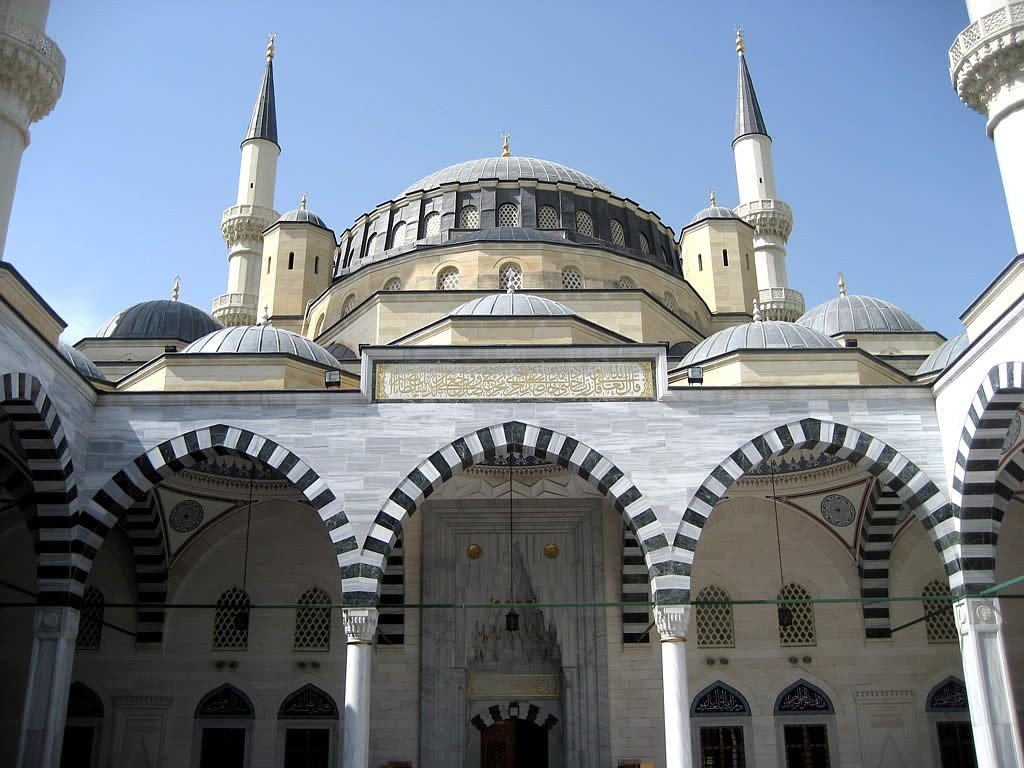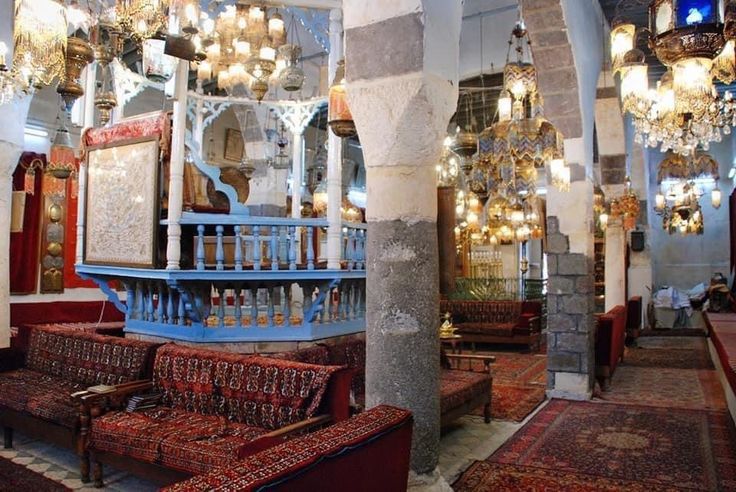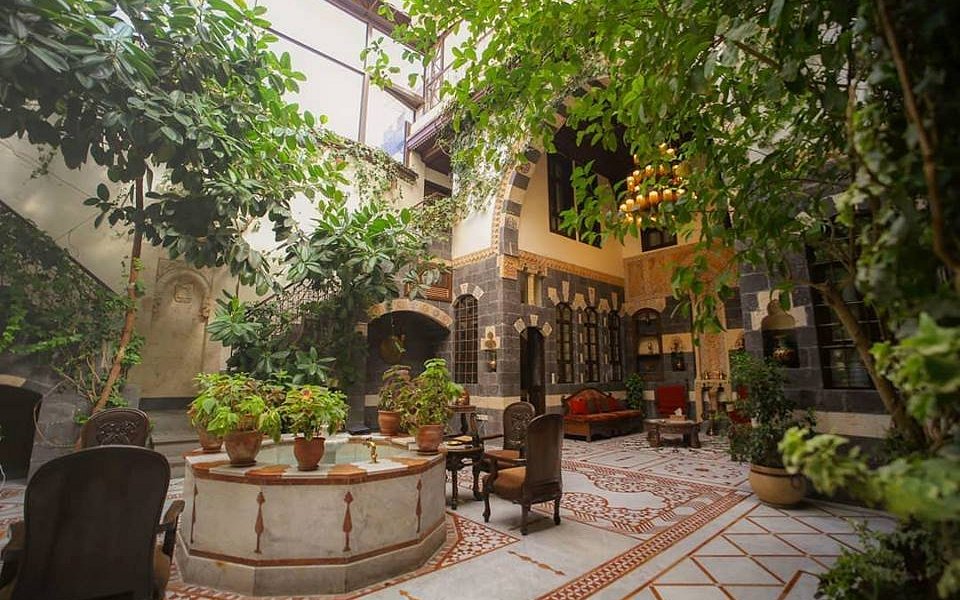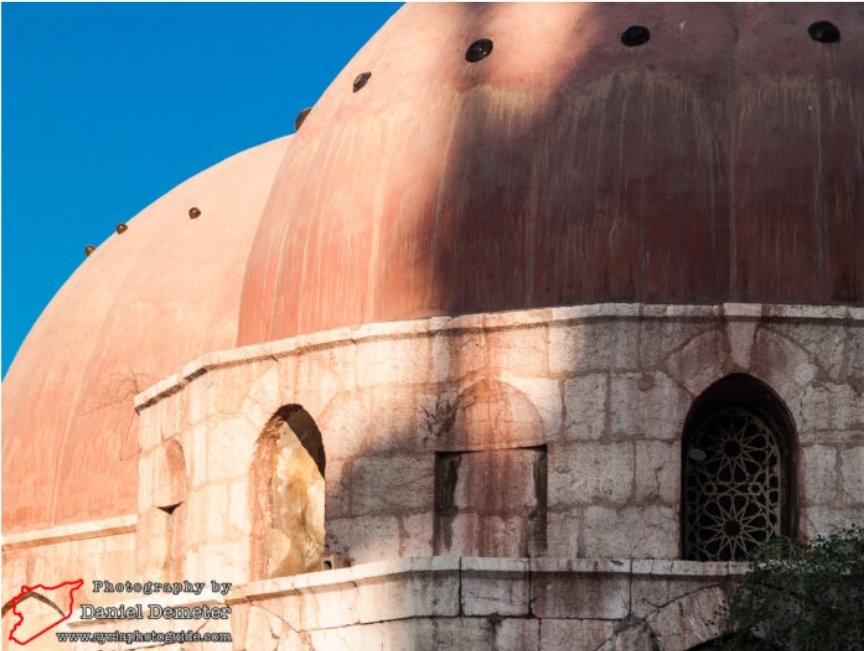The Khalid ibn al-Walid Mosque is the most famous landmark in Homs and an icon of late Ottoman architecture in inner Syria. It was built over the tomb of Khalid ibn al-Walid in 1852, and the current structure was erected by Governor Nazim Pasha in 1912. The design blends Ottoman planning with Mamluk influences: two marble domes reaching 34 meters in height cover the prayer hall, and two slender minarets have muqarnas crowns. The hall is accessed via a marble staircase framed by lemon trees. The tomb contains a silver casket disguised with gold and engraved with verses about jihad, while five stained-glass windows cast a blue light into the chamber.










